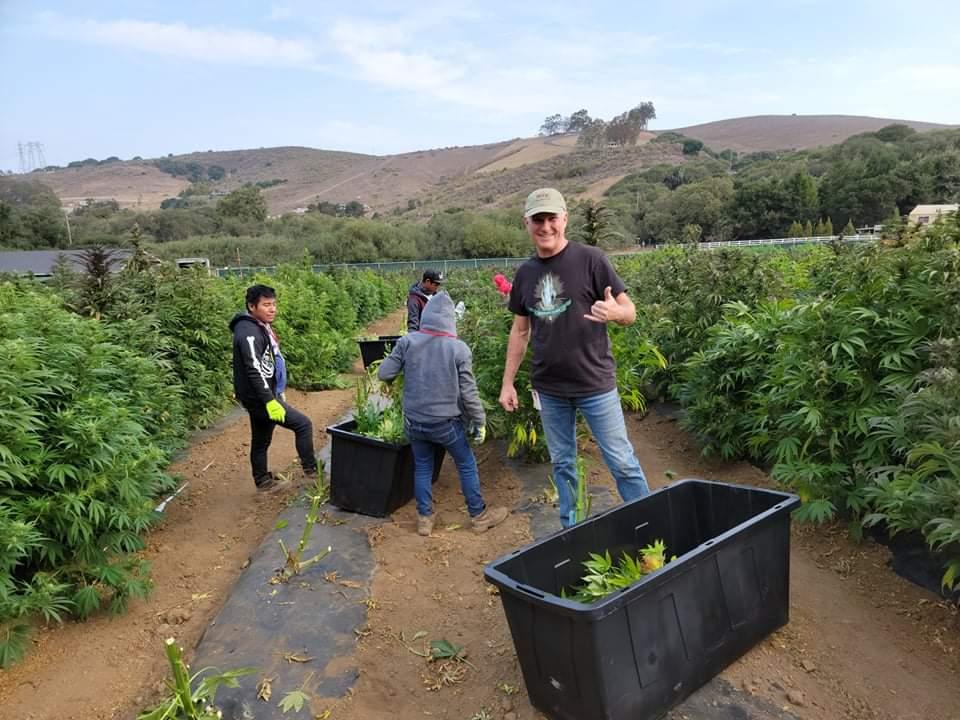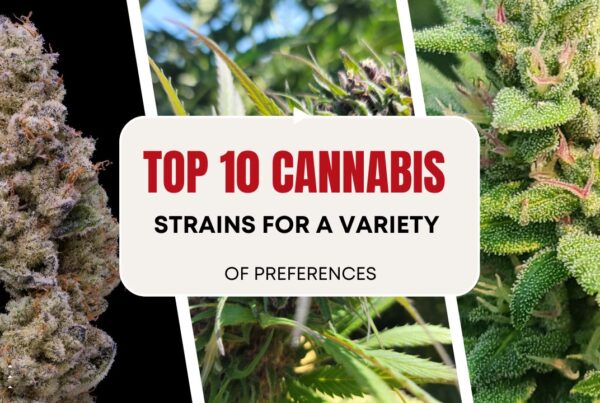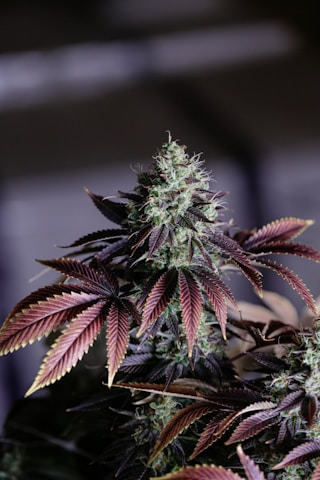The Ultimate Guide to Growing Cannabis

Embarking on the journey of growing cannabis can be both exciting and rewarding. Whether you’re a seasoned gardener or a beginner looking to cultivate your own plants, this step-by-step guide will walk you through the process, from selecting the right seeds to harvesting your own homegrown cannabis. With the increasing legalization of cannabis in various regions, more people are turning to home cultivation. This guide aims to demystify the process and provide you with practical tips and techniques to help you successfully grow your own cannabis plants. By the end of this guide, you will have a comprehensive understanding of what it takes to nurture healthy cannabis plants, ensuring a bountiful harvest. Get ready to dive into the world of cannabis cultivation and unlock the secrets to growing your own high-quality, potent buds.
Step 1: Selecting the Ideal Cannabis Strain
Researching Different Cannabis Strains
Embarking on the journey of selecting the ideal cannabis strain is an exciting step for both novice and experienced users. To make an informed decision, it’s crucial to delve deep into the world of cannabis strains through comprehensive research. Each strain boasts a unique combination of characteristics, including flavor, potency, and effects. By exploring an array of strains, you can uncover a wealth of information that will guide you towards finding the perfect match for your preferences and needs.
Factors to Consider When Choosing a Strain
- Cannabinoid Content: The cannabinoid content of a strain plays a pivotal role in determining its effects. Understanding the levels of cannabinoids such as THC and CBD in a strain is essential for predicting how it will interact with your body and mind.
- Terpene Profile: In addition to cannabinoids, terpenes also contribute to the overall experience of a cannabis strain. These aromatic compounds not only influence the flavor but can also modulate the effects. Whether you seek a strain with calming, uplifting, or focused effects, exploring the terpene profile can help you narrow down your choices.
- Growing Conditions: If cultivating your own cannabis is part of your plan, consider the growing conditions required by different strains. Factors such as climate preferences, flowering time, and nutrient needs vary among strains. Opting for a strain that aligns with your cultivation capabilities can lead to a successful and rewarding growing experience.
- Consumption Method: Another crucial aspect to ponder is your preferred method of consumption. Whether you enjoy smoking, vaping, or consuming edibles, certain strains may be better suited for specific methods. Understanding how different strains interact with various consumption techniques can enhance your overall enjoyment.
- Personal Preferences: Ultimately, your individual preferences and goals should guide your selection process. Whether you prioritize recreational enjoyment, medicinal benefits, or a mix of both, choosing a strain that resonates with your lifestyle is key to a fulfilling cannabis experience.
By carefully evaluating these factors and immersing yourself in the diverse world of cannabis strains, you can confidently select the ideal strain that not only meets but exceeds your expectations.
Step 2: Setting Up Your Growing Environment
Creating the ideal environment for your plants to thrive is a fundamental step in successful cultivation. In this segment, we will delve deeper into the nuances of setting up a conducive growing space.
Comparing Indoor and Outdoor Cultivation Spaces
When deciding between an indoor or outdoor cultivation space, it’s essential to weigh the pros and cons of each option. Indoor setups provide precise control over environmental variables such as temperature, humidity, and light cycles, allowing for year-round cultivation regardless of external weather conditions. On the other hand, outdoor environments harness natural sunlight and fresh air, offering a more cost-effective approach to growing with the added benefit of natural elements.
Essential Equipment and Tools Needed for Success
Whether you choose an indoor or outdoor growing space, certain equipment and tools are vital for the health and vitality of your plants. High-quality grow lights are crucial for indoor setups to simulate sunlight and promote photosynthesis. Selecting suitable containers or pots that provide adequate drainage and space for root growth is paramount. Additionally, using nutrient-rich soil or a quality growing medium, along with a reliable pH testing kit to monitor soil acidity levels, ensures optimal plant nutrition. Sharp pruning shears help in trimming and shaping plants, while a well-designed watering system is essential for consistent hydration.
Investing in reputable brands and quality equipment can significantly improve plant growth and overall yield. Beyond the basics, consider factors like ventilation, temperature regulation, and pest control to further enhance your growing environment. Proper airflow reduces the risk of mold and enhances gas exchange in plants, while maintaining the right temperature range is crucial for metabolic processes. Implementing effective pest control measures, whether through natural remedies or conventional methods, protects your plants from common threats.
Additional Considerations for Optimal Growth
To create an ideal growing environment, focus on optimizing light exposure, air circulation, and nutrient uptake. Tailoring your setup to meet the specific needs of your plants sets the stage for a successful harvest and robust growth. By paying attention to these details and continuously monitoring and adjusting your growing environment, you’ll nurture healthy, thriving plants. Stay tuned for more insights on cultivating a flourishing garden!.
Step 3: Germination and Seedling Care
Understanding the Germination Process
Germination is a critical stage in the life cycle of plants where a seed sprouts and begins to grow into a seedling. This process requires the right combination of water, warmth, and air. Seeds have different requirements for germination; some need light to germinate, while others require darkness. Understanding these specific needs is essential to successfully germinate seeds. Factors such as soil temperature, moisture levels, and depth of planting also play significant roles in the germination process.
Tips for Caring for Seedlings
Once your seeds have germinated and seedlings have emerged, providing proper care is essential for their healthy growth. Adequate sunlight is crucial for photosynthesis and overall plant development. Ensure your seedlings receive at least 6-8 hours of sunlight daily, either through natural light or supplemental grow lights.
Watering seedlings correctly is vital. Overwatering can lead to root rot, while underwatering can cause wilting and stunted growth. Water your seedlings when the top layer of soil feels dry to the touch, but be careful not to flood the pots or trays.
In addition to water and sunlight, seedlings require nutrients for healthy growth. Consider using a diluted liquid fertilizer to provide essential nutrients during the early stages of growth. Be cautious not to over-fertilize, as this can harm the delicate seedlings.
Protecting seedlings from pests and diseases is paramount. Inspect your plants regularly for signs of pests like aphids, spider mites, or fungal infections. Use organic pest control methods or mild soaps to treat infestations while minimizing harm to the seedlings.
By following these tips and providing proper care, you can nurture your seedlings into robust, healthy plants ready for transplanting into the garden.
Additional Tips for Successful Germination and Seedling Care
- Choosing the Right Soil: Select a well-draining, nutrient-rich potting mix for your seeds. Avoid compacted soils that hinder root growth.
- Temperature Regulation: Maintain a consistent temperature for germination. Most seeds germinate best in temperatures ranging from 65-75°F (18-24°C).
- Humidity Control: Keep the environment around your seedlings humid but not overly wet. Using a humidity dome or misting the plants can help maintain optimal humidity levels.
- Thinning Seedlings: Once your seedlings have developed true leaves, thin them out to prevent overcrowding and competition for resources.
- Transplanting Care: When it’s time to transplant your seedlings into larger containers or the garden, handle them gently to avoid damaging the roots. Ensure the new planting location provides adequate space, sunlight, and soil conditions for the specific plant species.
- Hardening Off: Before transplanting seedlings outdoors, gradually acclimate them to outdoor conditions by exposing them to sunlight and outdoor temperatures for increasing periods each day.
Remember, successful germination and seedling care are crucial steps in establishing a thriving garden. By providing the right conditions, attention, and care, you set your plants up for healthy growth and bountiful harvests.
Step 4: Nurturing the Vegetative Stage
In this crucial stage of your plant’s growth cycle, nurturing the vegetative phase is essential to establish a strong foundation for healthy and robust plant development. Let’s explore the vital components to focus on during this phase to ensure your plants thrive.
Providing Proper Light for Growth
Optimal Light Selection: Choosing the right grow light is vital for supporting vegetative growth. LED grow lights are energy-efficient and offer a full spectrum of light beneficial for this stage. Consider factors like light intensity and color temperature when selecting a grow light. Light Schedule: Maintain a consistent light schedule of 18 hours per day during the vegetative stage. This extended light exposure simulates long summer days, encouraging vigorous growth and photosynthesis.
Nutrient Management for Healthy Growth
Balanced Nutrient Supply: Utilize a balanced fertilizer with a higher nitrogen content to promote leafy growth and overall plant development. Look for fertilizers formulated specifically for the vegetative stage to provide essential macronutrients and micronutrients. Feeding Routine: Establish a feeding schedule based on your plant’s needs and growth rate. Regularly monitor your plants for any signs of nutrient deficiencies or excesses, adjusting the feeding regimen accordingly.
Maintaining Ideal Humidity and Temperature Levels
Humidity Regulation: Maintain a humidity level ranging between 40-70% to prevent issues like mold, mildew, and stress on plants. Consider using a humidifier or dehumidifier to control humidity levels effectively. Temperature Control: Ensure a consistent temperature range of 70-85°F during the day, slightly lowering it at night to mimic natural temperature fluctuations. Stable temperatures support healthy growth and metabolic processes in plants.
Importance of Air Circulation
Air Quality: Adequate air circulation is crucial during the vegetative stage. Stagnant air can lead to issues like pests and diseases. Use oscillating fans to promote air movement around plants, strengthening stems and preventing mold formation. CO2 Enrichment: Consider CO2 supplementation to enhance photosynthesis and promote faster growth. Monitor CO2 levels to ensure they remain within the optimal range for plant growth.
Training and Pruning Techniques
Topping and FIMing: Implement topping or FIMing techniques to encourage bushier growth and increase yields. These methods involve strategically removing parts of the plant to redirect growth hormones, resulting in more lateral growth and improved light penetration. LST (Low-Stress Training): Utilize LST methods to shape plant growth and optimize light exposure. By gently bending and securing stems, you can create an even canopy, allowing for better light distribution and increased bud development.
By incorporating these additional strategies into your vegetative stage care routine, you can further enhance the health, growth, and yield potential of your plants. Remember, attentive observation and tailored care are key to successful plant cultivation from vegetative growth to maturity.
Step 5: Flowering Phase and Harvesting
Managing the Transition to Flowering
- The Importance of the Flowering Phase in the Plant’s Life Cycle
- Providing the Right Nutrients and Light Conditions for Optimal Flowering
- Monitoring and Adjusting Environmental Factors Such as Humidity and Temperature
- Understanding the Different Stages of Flowering and How to Support the Plant
- Importance of Proper Ventilation During Flowering
Determining the Right Time to Harvest
- Recognizing the Signs of Readiness for Harvest, Including Changes in Color, Pistil Development, and Trichome Ripeness
- The Impact of Terpenes and Cannabinoids on Harvest Timing
- Timing Considerations for Desired Potency and Effects
- Exploring Different Harvesting Techniques: Wet Trimming vs. Dry Trimming
- Methods for Drying and Curing to Preserve Potency and Flavor
- The Role of Flushing Before Harvest
When a cannabis plant reaches the flowering stage, it marks a crucial period in its life cycle. The transition to flowering is a delicate phase that requires careful attention to detail. Providing the plant with the right balance of nutrients, light, and environmental conditions is essential for successful flowering. Additionally, monitoring factors like humidity and temperature can help ensure optimal growth and bud development.
Harvesting at the right time is equally important to achieve the desired potency and effects from the cannabis plant. Timing is critical as it impacts not only the cannabinoid and terpene profiles but also the overall yield and quality of the harvest. By observing the plant’s physical attributes such as color changes, trichome development, and pistil maturity, growers can determine the ideal moment for harvest.
Furthermore, understanding the role of terpenes and cannabinoids in influencing the harvest time can provide valuable insights for growers. Different harvesting techniques, such as wet trimming and dry trimming, offer unique benefits and considerations for preserving the plant’s integrity and potency. Proper drying, curing, and flushing processes post-harvest are crucial steps in maintaining the quality and flavor of the final product.
The flowering phase and harvesting stage are critical junctures in a cannabis plant’s growth cycle. By mastering the art of managing these phases effectively, growers can maximize the yield, potency, and overall quality of their harvests.
Step 6: Curing and Storing Your Cannabis
Importance of Proper Curing for Enhanced Flavor and Potency
Curing your cannabis is a pivotal stage in the cultivation process that plays a significant role in enhancing the overall flavor and potency of the final product. Beyond just drying the buds, curing involves a carefully managed process of drying and aging the cannabis flowers to achieve optimal results. Proper curing not only refines the aroma and taste profile but also maximizes the psychoactive and therapeutic effects of the cannabinoids present. Neglecting this crucial step can result in a subpar product that lacks the complexity and strength desired by cannabis enthusiasts and connoisseurs alike.
Effective Storage Practices to Preserve Freshness and Potency
Once the curing process is completed, the next vital aspect to consider is how you store your cannabis to maintain its freshness and potency over time. Inadequate storage conditions can hasten the degradation of cannabinoids and terpenes, ultimately compromising the quality of the product. To safeguard your cannabis investment and ensure a premium experience, adopt the following storage best practices:.
- Utilize Quality Airtight Containers: Opt for opaque, airtight containers to shield your cured cannabis from light exposure, air, and moisture—all of which can degrade its quality over time.
- Maintain Ideal Temperature and Humidity Levels: Store your cannabis in a cool, dark location with consistent temperature and humidity levels to prevent mold growth and preserve potency. Avoid extreme temperature fluctuations or high humidity, as they can negatively impact the product.
- Minimize Handling: Limit unnecessary handling of the stored cannabis to reduce exposure to oxygen and light, which can degrade cannabinoids and terpenes. Excessive handling may also lead to the loss of trichomes, affecting potency.
- Consider Desiccants or Humidity Packs: To regulate humidity levels within storage containers, consider using desiccants or humidity packs designed for cannabis storage. These aids help maintain the ideal moisture content, preserving the quality of your cannabis.
By adhering to these proper curing and storage techniques, you not only preserve the flavor, potency, and overall quality of your cannabis for an extended period but also ensure a consistently rewarding experience with each usage. Remember, investing time in the curing and storage process can greatly enhance the enjoyment and benefits derived from your cannabis harvest.
Conclusion
Mastering the art of growing cannabis requires a blend of patience, knowledge, and dedication. By following the step-by-step guide outlined in this blog, individuals can cultivate their cannabis plants successfully while ensuring optimal growth and potency. Remember, attention to detail, proper environmental conditions, and consistent care are key to a successful cannabis cultivation journey. With the right approach and a passion for this plant, anyone can develop a green thumb and enjoy the fruits of their labor in the form of high-quality homegrown cannabis.










